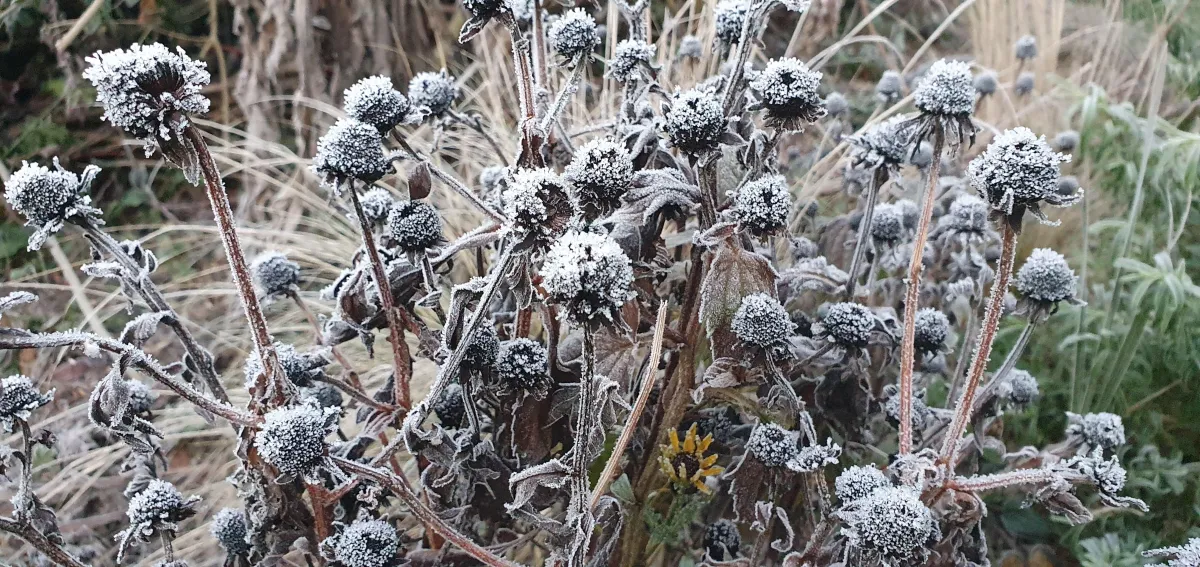The Green Heart
Knowledge Centre
Keep up to date with our latest news, advice and information.

Get ahead this winter: Simple garden tasks to prepare for a brilliant spring
“Every gardener knows under the cloak of winter lies a miracle - a seed waiting to sprout, a bulb opening to light, a bud straining to unfurl. And the anticipation nurtures our dream” - Barbara Winkler, American author and editor
While your garden may appear quiet during the winter months, beneath the surface, it’s a perfect time to get ahead on your gardening tasks, setting your space up for a vibrant spring. Winter gardening is all about making smart, low-effort improvements while plants rest in their natural dormancy. With a bit of thoughtful preparation, you’ll give your plants a head start, creating a garden that’s ready to burst into life come spring.
In this article, we’ll explore the many benefits of winter gardening, introduce easy tasks suited to various garden types, and recommend winter-interest planting ideas for pots and borders. You’ll find tips for protecting tender plants, advice on mulch options, and ideas to attract wildlife—all with a focus on eco-friendly practices. Whether you have a compact urban garden, a spacious countryside plot, or an allotment, let’s make the most of the winter months.
The Benefits of Winter Gardening

1. Save Time and Effort in Spring
During winter, growth slows, making it easier to tackle tasks like weeding, bed preparation, and soil improvement without chasing the vibrant growth of spring. A thoughtfully prepared garden allows plants to receive full light, space and nutrients once they start growing. Soil can be more workable after autumn rains, which means it’s the ideal time to prepare new borders or kitchen garden beds.
2. Establish Plants During Dormancy
Winter is the season for planting bare root trees and shrubs, as the dormant period allows roots to establish themselves before the active growth of spring. Winter planting is cost-effective, as bare root trees are usually significantly cheaper, have greater root mass than pot-grown specimens and ensures quicker establishment.
For those interested in planting wildlife-friendly hedging or trees, species like hawthorn, rowan, or crab apple are ideal.
3. Eco-Friendly Gardening Practices
Winter’s cooler, wetter weather reduces the need for watering following planting. Additionally, mulching soil in winter is an effective way to enrich it naturally without synthetic fertilisers. See the guide to mulch options, below.
Winter Garden Tasks: Ideas for All Garden Sizes
Winter provides a valuable window for thoughtful garden tasks. Below are ideas which are adaptable to spaces of all size;
1. Clear and Weed Beds
Taking time to weed during winter gives you a head start on the growing season. Use a hand weeder (at Green Heart, we use Niwaki Hori Hori's) or hoe to remove weeds from flower beds and borders, as soil is more workable and roots are easier to dislodge. Winter weeding minimises competition for your plants and when the temperatures are low, the weeds won't grown back as quickly.

2. Prepare New Borders or Raised Beds
For those thinking of adding borders or expanding garden beds, winter is an ideal time to prepare the soil. Digging and shaping new areas now will make spring planting smoother. Consider applying a layer of mulch or compost to improve soil quality and protect it from winter weather - to avoid nutrients being leached from free-draining soils - or to make heavy, clay soils more workable.
3. Plant Bare Root Trees and Hedges
Bare root trees and hedges provide a cost-effective way to add structure to your garden. Choose options like hazel or hawthorn for hedges that attract wildlife, or flowering cherry trees for ornamental interest. Trees and shrubs can be planted throughout the winter, so long as the ground isn't frozen or waterlogged. Always dig a square hole (especially for plants in round pots) and plant to the 'soil mark', which will ensure it's at the same level as they had been grown before being lifted.
Bare root trees and shrubs need planting as soon as possible after delivery, but can be 'heeled in' temporarily if the planting space is not cleared, or the conditions aren't suitable - dig a shallow pit, lay the roots in and cover over with soil, then thoroughly water; this will keep the roots from drying out.
Winter Planting Ideas for Pots and Borders
Winter isn’t just for maintenance; it’s also a wonderful season to introduce plants that provide interest, texture, and colour through the colder months.
For Smaller Gardens
Hellebores (Helleborus): Known as “winter roses,” these hardy perennials add charm with their delicate flowers, which bloom even in freezing temperatures. They work well in pots or borders.
Dwarf Conifers: Compact and evergreen, dwarf conifers provide year-round structure and suit smaller spaces beautifully. Their low maintenance needs make them ideal for busy gardeners.
Winter Heathers (Erica carnea): Heathers bring lovely pinks and purples to your pots or beds and attract pollinators.
For Larger Spaces
Cornus (Dogwood): Known for its striking red or yellow stems, dogwood adds visual interest to winter borders. Consider planting in a mass for a greater effect.
Viburnum bodnantense: With fragrant pink blossoms that appear on bare stems and bloom even on chilly days, Viburnum adds both colour and scent.
Mahonia: These shrubs produce bright yellow flowers, providing a stunning contrast against darker evergreen foliage and serving as an early food source for pollinators.
For a tailored winter planting plan that considers your garden’s space and soil, Green Heart Horticultural Services is available to assist in creating beautiful, seasonally inspired designs.

Options for Mulching: Compost, Bark, and Gravel
Winter mulching improves soil health, conserves moisture, and insulates plant roots. Here’s a breakdown of popular options:
Compost: Rich in nutrients, compost enhances soil structure and promotes microbial activity. It’s an excellent option for vegetable beds and flower borders.
Bark Mulch: Effective for weed suppression, bark provides a protective layer that slowly decomposes, adding organic material to the soil. Ideal for ornamental borders.
Gravel: While gravel doesn’t add nutrients, it provides insulation and improves drainage. This makes it a good choice for alpine plants or pots.
For a detailed guide on mulching, have a read of our article here.

Protecting Tender Plants in Winter
Winter can be tough on certain plants, so taking precautions ensures they thrive next spring.
Wrap Tree Ferns with Straw and Hessian: Covering the crown with straw and wrapping it in hessian protects against frost, especially in more exposed areas.
Move Pots to a Sheltered Location: Placing pots near the house or under a shelter provides warmth and reduces frost exposure.
Use Fleece to Protect Shrubs: Lightweight fleece works well for delicate shrubs; secure it loosely to avoid trapping moisture.
Simple Tips for Attracting Wildlife in Winter
A garden teeming with life is a beautiful sight, and winter is a great time to make wildlife feel at home. Here are a few simple ideas:
Create Habitat Piles: Gather fallen branches and leaves to form piles, offering shelter for insects and hedgehogs.
Install Bird Feeders: Providing seeds and suet helps birds through the colder months.
Leave Seed Heads on Plants: Plants like sedum and echinacea offer food and shelter for birds and insects.

Let Green Heart Horticultural Services Prepare Your Garden for Spring
From winter weeding and mulching to planting bare root trees and protecting tender plants, a bit of winter prep can make a world of difference. Green Heart Horticultural Services is here to help you with every aspect of seasonal garden maintenance, ensuring that your space is set up for a thriving spring.
Contact us today to learn more about our winter gardening services. Let’s work together to bring out the best in your garden, sustainably and beautifully.

Expert horticulturists, gardening for people and planet.
Quick Links
Home
About Us
Guarantee
Services
Useful Links
Testimonials
FAQ's
Blog

